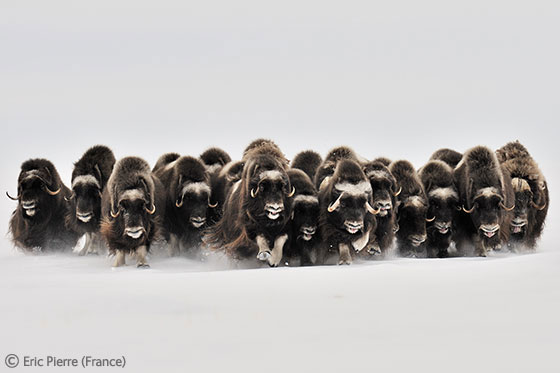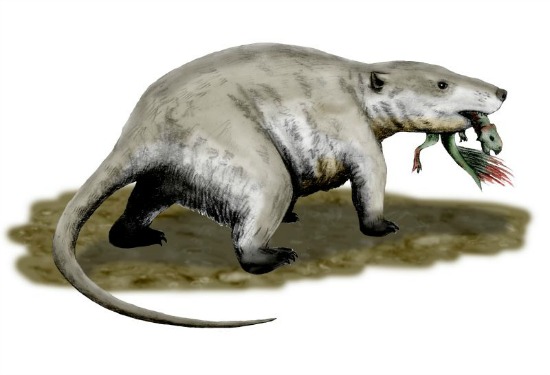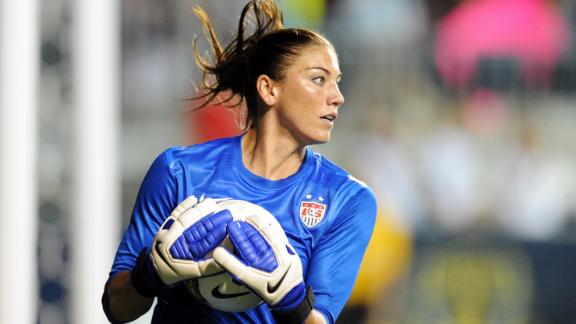It was scarcely a year ago that a Japanese squad captured the world's attention by beating a heavily favored American squad in the World Cup. Emboldened team play of the Japanese, inspired by the plight of their tsunami stricken homeland, provided some of the most captivating sports drama of the new millennium. In the 2012 Olympics the two teams squared off yet again, this time the US girls prevailed.
And while history will no doubt record the Japanese Woman's team as a special unit who seized a special "zeitgeist" moment in time, the US through their continued dominance of the sport, will no doubt be recognized as the greatest female soccer team of all time.
 |
| The Mammals Are Winning |
Clearly mammals are doing something right....
But it wasn't always golden days for class mammalia.
 |
| The suppression continues.... |
| Tokay gecko |
One of the stranger behaviors I observed with my Tokay Gecko was that it took a particular interest in a batch of kittens that I had brought home. What it really keyed in one was the distinctive plaintive call of the kittens....Meeewww. Now some people feed their Tokay "pinkies" or even small mice- but I had never done that. The way the Tokay came out of hiding was almost like a predatory response to the mammalian yelps. Could this response to helpless mammal baby cries have been hardwired into the Tokay or perhaps other reptilian predators in the past? ....which inspired the pic below where I have drawn a sphenodont reptile taking off with a baby mammal. Mom has arrived, a little too late.
 |
| Illustration by author. Raiding the Cradle. |
Indeed it is the persistent predatory pressure of predatory dinosaurs as well as dinosaurs monopolizing all the medium/large bodied terrestrial niches during the Mesozoic that is most often interpreted as the primary factors for mammalian suppression during that time. But how true is this notion?
While no doubt terrestrial stalking small theropods, as well as the young of large species, placed a heavy predatory toll on mammals- they were probably mostly generalist predators, like the heron, and ate whatever they could catch. Probably an equal threat to mammals during the Mesozoic were pterosaurs. Recently liberated from their ecological stereotype of "demented seagulls" the vast majority of pterosaurs are now interpreted as terrestrial predators- gleening a living from scavenging, dino hatchlings, and whatever other small fry they could overwhelm and put down their gullet. In addition to theropods and pterosaurs, various terrestrial crocs as well as evolving squamates- snakes and lizards- were all putting predatory pressure on the mammals.
So it appears that predatory dinos were only one component of a suite of predators that enjoyed mammal flesh during the Mesozoic. But what about the dinos dominance in terrestrial ecosystems? Did that thwart mammal growth?
The idea of dinosaurs being "big" is not without merit. The average dinosaur weighed in the order of several tonnes while, for the whole of the "Age of Mammals"- the Cenozoic, the average weight of a mammal is estimated at about 2-5 kg (5-10 lbs). So dinosaurs did not even particularly dominate in the size range that mammals appear to cluster at. With a few exceptions, why do we not see Mesozoic mammals thriving at the size range of say a small cat? Dinosaurs were not particularly specialized to exist at that size so why do we not see more mammals at this size that seems so optimal for them?
 |
| Typical Mesozoic Mammal 4-6" long Cronopio dentiacutus |
Well for one dinosaurs were occupying that size range, just not adult dinosaurs. Hatchling and infant dinosaurs would have easily been in the 5-10 lb range and would have acted as separate ecological species from the adults at this stage. Every season a new crop of hatchlings/yearlings would arise competing for food, burrows, hiding spots etc, etc. putting a lot of stress on that particular morpho-ecospace.
Although predatory pressure and competition from hatchling dinos doubtless suppressed mammal size during the Mesozoic the major obstacle to the mammals was neither. You see, just like the US woman's soccer team, mammals faced some direct competition that had to be bested in order for the furry ones to truly prosper.
A growing picture is emerging suggesting that sphenodonts (represened today by the Tuatara) and several radiations of terrestrial crocodiles- most notably the spenosuchians and the notosuchians- were the primary competitors to mammals during the Mesozoic.
I have already talked a bit about the unexpected diversity of Mesozoic crocodiles a bit here.
What I did not dwell on is the increasing realization that many of these crocs, especially the notosuchids, were experimenting with herbivorous/omnivorous diets and evolving heterodont dentition.
 |
| Pakasuchus kapilimai a notosuchid crocodile- NOT a mammal |
 |
| Armadillosuchus arrudai |
 |
| Tuatara munching shearwater chick |
When we look at the fossil record for this family we see some interesting stuff. Priosphenodon avaiasi was the largest sphenodont at up to a meter long and about 33 lbs.
 |
| Copyright Jorge Gonzalez, Priospenodon avaiasi |
 |
| Pleurosaurus goldfussi |
In fact the diversity of sphenodont skull shape and feeding ecology is suggestive of a wide variety of feeding niches- herbivore, omnivore, insectivore...
Hmmm, sound familar? Just like the crocs I talked about earlier, sphenodonts, were a diverse group of critters that competed directly with mammals and actively suppressed them by monopolizing niches in the pivotal 2 lb and up range.
Mammals showed incredible diversity and filled multiple niches in the Mesozoic, they were simply not large. In the famous Morrison formation mammals exceed all other vertebrae groups in species diversity. Yet they do not exceed squirrel size. Interestingly the Morisson contained a cat sized terrestrial croc, Fruitachampsa, and several sphenodonts in the 2 lb range. Where we do finally see badger sized mammals, both sphenodonts and land crocs are rare or absent- such as in Maastrichtian North America or the Jehol Biota of China.
 |
| Repenomamus |
And some more Hope Solo just because...
Support me on Patreon.
Like antediluvian salad on facebook.
Watch me on Deviantart @NashD1.Subscribe to my youtube channel Duane Nash.
My other blog southlandbeaver.blogspot.





No comments:
Post a Comment